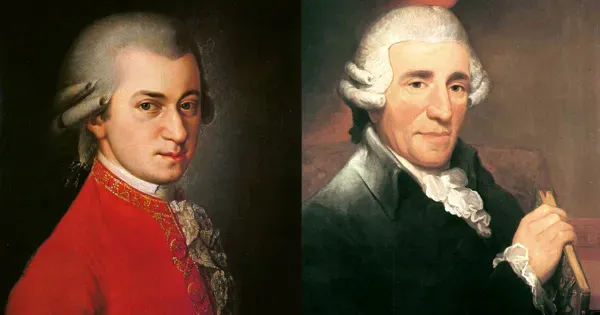Yo-Yo Ma Takes Mumbai by Storm
Yo-Yo Ma remains quite easily one of the top five string players in the world and quite possibly the last surviving heavy-weight cellist of his generation. With the recent announcement of Lynn Harrell’s death, Yo-Yo Ma has no competitors alive. Put quite plainly he is the best. Mumbaikars turned up in large numbers to witness what was the making of history in this unique city of many millions. It was indeed heartening to see so many young people paying top dollar to see an evening of super-serious music. The Tata Theatre with a capacity of over 1000 was palpably teeming with anticipation. There was no intermission and Ma played for two hours and twenty minutes without interruption- a remarkable feat even if for only physiological reasons. After the third Suite he chatted to the audience for a few minutes inviting them to leave if they so desired but of course no one left. The audience was knowledgeable, attentive and stayed till the end. But truly I was surprised not only by the given, that Yo-Yo Ma is truly a remarkable musician, but that the Mumbai audience was fully up to it.
The 63 year old Chinese-American cellist was born in Paris and schooled in New York City. Performing from the age of four and a half he was a child prodigy, studied at Harvard and Juilliard School. He has received 18 Grammy awards, recorded more than 90 albums and has appeared as a soloist with virtually every orchestra around the world. In addition to recordings of standard classical repertoire of all genres, he has recorded a wide variety of folk music such as American bluegrass music, traditional Chinese melodies, Piazzolla’s tangos and Brazilian music as well as jazz. His cello is a 1733 Montagnana valued at USD 2.5 million.
A word about the Bach Project
Yo-Yo Ma sets out to perform Johann Sebastian Bach’s six Suites for solo cello in one sitting, in 36 locations on six continents around the world. It is a journey motivated by his six-decade relationship with the music.
"I believe that culture - the way we express ourself and understand each other - is an essential part of building a strong society. My hope is that together we can use Bach’s music to start a bigger conversation about the culture of us."
This is relevant as there is no more music than Bach’s that speaks to our common humanity especially in these times of division.
The tour began on 1st August 2018 in Denver, Colorado going on to Leipzig, Washington, DC, Montreal and arriving in Mumbai for January 21st night. The tour goes on to Vienna, Chicago, Australia and New Zealand.
And what of the performance
Bach’s unaccompanied Suites were ostensibly written before his violin sonatas. There is no existing original manuscript except one copy in the hand of his second wife Anna Magdalena. Therefore there is very little by way of detail marking of slurs and bowing. The line is basically monophonic with occasional polyphonic chords. This leaves it open to wide variations of interpretation. It is to Yo-Yo Ma’s credit that there was hardly any longueurs and although one may not agree with his every solution he paced the evening admirably. There was hardly a dull moment. The opening Suite no. 1 in G major has a prelude that is familiar to all, even the most uninitiated. The arpeggiated tonic chord was a little quicker than in for instance Casals’ recording and tossed away as if for nothing. It took Ma a little while to judge the acoustic of the filled hall and the quick movements did not speak that easily sounding a bit muffled. It was only towards the end of Suite no. 1 (Gigue) that the tone had some bite. This was a subtle performance not going straight for the jugular. Suite no. 2 in the key of D minor was more aggressively played though still very gallant in its pointed dance movements. The six Suites go stylistically in pairs of two. Each Suite is in a six movement format with flanking rapid movements (Prelude and Gigue) with interpolated Allemande, Courante, Sarabande and two Bourrees / Menuets / Gavottes.
Suite no. 3 in C major was noticeably more characterful in nature. For the first time I noticed Ma’s dynamic variety. Here the highs and lows were more marked and often he opened a movement with an up-bow with its repeat forte with a down-bow.
And then it happened!
While all along we were listening to exquisitely presented perfectly stylish Bach playing, Yo-Yo Ma spoke a few words laughing about the incessant coughing from the otherwise attentive audience. It worked like a spell.
With the audience and performer at ease with each other he proceeded to give the remaining three Suites all he had. Suite no. 4 in E flat was outstandingly warm and deeply coloured. There was no more throwing away movements at lightning speed. He gave full value to the notes and the Sarabande had a gorgeous singing line. The Prelude to Suite no. 5 (C minor) was reminiscent of the later keyboard Partitas with a slow introduction followed by a flowing movement. The technical hurdles of this massive work were challenging even to a master such as Yo-Yo Ma. The last Suite was in its own way a towering success.
It is obvious that Yo-Yo Ma makes full use of modern string instrument practices. There is no nod to period instrument performance. He uses the full tonal scope but retains little vibrato and adds no embellishments. It is not possible to say whether he used gut strings. I am inclined to think he did as there was a soft edge to the tone- there was no “ping” to the sound at least from where I was sitting in the acoustically perfect Tata Theatre. All in all an exhilarating evening with one of classical music’s great modern-day interpreters.




